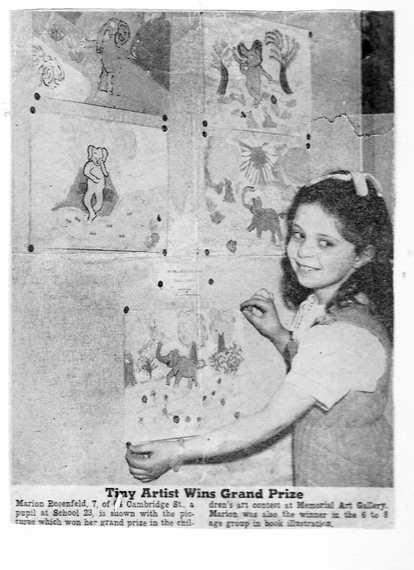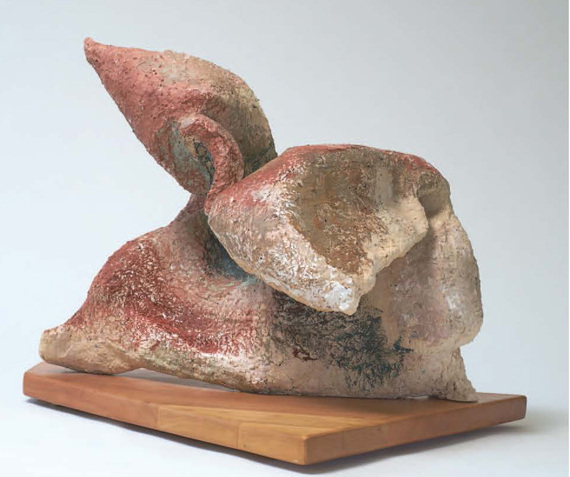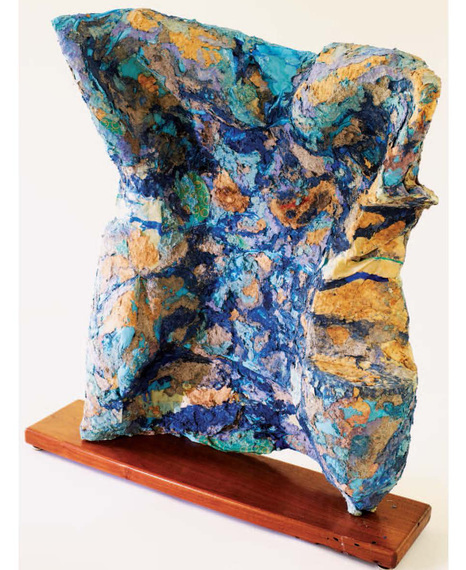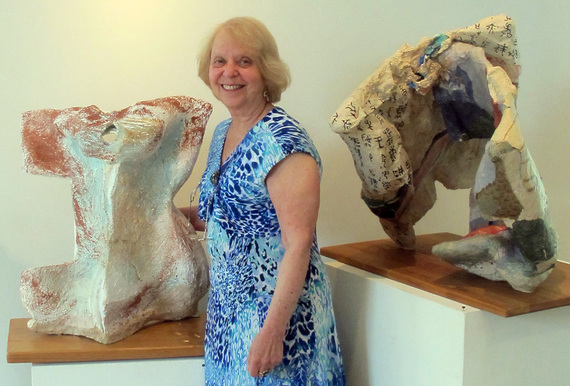Marion Behr (née Rosenfeld) admits she's happiest while making art. She won her first national art competition in 1946, at age seven. Since then, her work has been collected by numerous prestigious institutions, including The Smithsonian. She coined the term "home-based business," founded a publishing house and co-authored Women Working Home: The Homebased Business Guide and Directory (1982). She appeared on talk shows and represented female entrepreneurs before Congress and the Labor Department. President Ronald Reagan appointed her Personal Delegate to the White House Conference on Small Business. In 1992, she and her husband patented the first sustainable, acid-free graphic etching process, a green breakthrough, which won the Charles A. Lindbergh Grant in Arts and Humanities.
Clearly, Marion is paragon of excellence and versatility -- but even the laurels of Olympia can't soften the blow of a cancer diagnosis. Nothing can. Marion would discover that the art of surviving breast cancer requires creativity, compassion and community; gifts she knows how to leverage.
In 2006, Marion's three grown kids reminded her -- even nagged her -- to get her annual mammogram, which by then was overdue. Early detection resulted in an optimistic prognosis. Rather than isolating herself, Marion connected with other patients undergoing radiation therapy, soliciting their stories and hopes. Marion's attention was captured not only by her fellow patients, but also by stacks of Alpha Radiation Cradles. These custom-molded immobilization devices are discarded after radiation therapy is completed.
Marion was inspired. She requested them, St. Barnabas Medical Center in New Jersey responded kindly, and her next project commenced. Thirty-five radiation cradles became abstract sculptures by Marion's hands, conveying the beauty, imaginings and feelings of patients they once anchored. Her shows and installations, "Image Early," and "Cancel Cancer," were intended to inspire all women and men to face cancer screenings valiantly, empowered by hope and guidance.
In a master stroke, the team at New Jersey's Center of Contemporary Art decided that Marion's 2009 show would also feature a panel. Two physicians and four breast cancer survivors shared their perspectives and fielded questions. The public response was overwhelmingly positive, so much so that Marion was emboldened to compile narratives of experience and expertise in a comprehensive book, so everyone diagnosed with breast cancer might have access to counsel.
In Surviving Cancer, Our Voices & Choices, Marion enrolled contributors from the USA, Canada, Cambodia and Israel, including physicians, patients, researchers and health professionals. They discuss everything from the frontiers of research to finding a strong medical team, from family drama to navigating cosmetic reconstruction, from handling chemotherapy to exploring alternative therapy, and how two Cambodian women coped despite a lack of medical resources. Late in the process, Marion presented a draft to her daughter, Dawn Behr-Ventura MD, herself a radiologist with expertise in breast cancer. Dawn pointed out the book needed a chapter on male breast cancer and promptly wrote it herself -- like mother, like daughter.
Marion's own story is here, along with stunning full-color illustrations of her radiation cradle sculptures. The text reminds me of radio narratives by legendary journalist Studs Terkel, because almost every chapter is conversational, even intimate in tone. Some opinions contradict others, but as Marion writes, "...that should help the reader discover what questions to ask and in which direction to go."
But most of all, this book gets people talking. Marion's optician, who regularly volunteers at a hospital in a West Virginia coal mining town, donated two copies of Surviving Cancer, Our Voices & Choices to its Oncology Department. During a subsequent visit, she discovered a nurse with a group of patients reading book chapters aloud to each other. Marion tears up when she reflects on that.
Marion discovered that typically, survivors feel responsible for helping others through the ordeal of cancer and find purpose in that mission. By sharing their honest stories, survivors are doing just that. This book isn't just a guide, it's a mandate for connection and honesty. It focuses beyond cancer to celebrate individuality and significance. It's challenging and it's beautiful. It's art.





